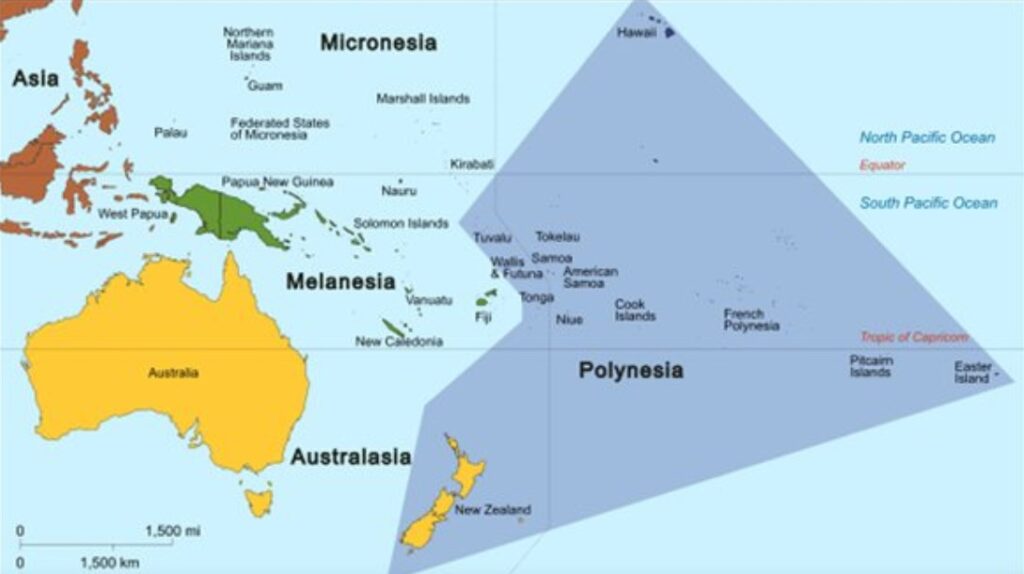
Polynesia is the area of oceanic islands from Hawaii in the north, to Rapanui (Easter Is) in the east to Aotearoa-New Zealand in the south.
Polynesia (from the Greek for “many islands”) is a collection of over 1,000 islands spread over a region of the Pacific Ocean covering an area equivalent to North and South America combined. Polynesia was first populated some 3,000 years ago, when a people known as the Lapita journeyed eastward from New Guinea, arriving first in Tonga and Samoa.
Roughly 2,000 years ago, these Polynesians journeyed across thousands of miles of deep ocean to populate the Cook Islands, the Marquesas Islands, French Polynesia, Hawai’i, Easter Island, and finally, New Zealand.
There, in what’s known as the “Cradle of Polynesia,” a distinctly Polynesian culture developed over the course of a thousand years.
Early Polynesians probably journeyed all the way across the Pacific to South America. That’s the only ready explanation for the presence all across Polynesia of sweet potatoes, which hail from South America. Further evidence: Throughout Polynesia, the word used for sweet potato is kumara—the same word used by the Peruvian Indians in South America. © The Exploratorium, www.exploratorium.edu
French Polynesia is five separate groups of islands (the Society Islands Archipelago, Tuamotu Archipelago, Gambier Islands, Marquesas Islands and the Austral Islands). It is made up of 121 individual islands and atolls within these chains.
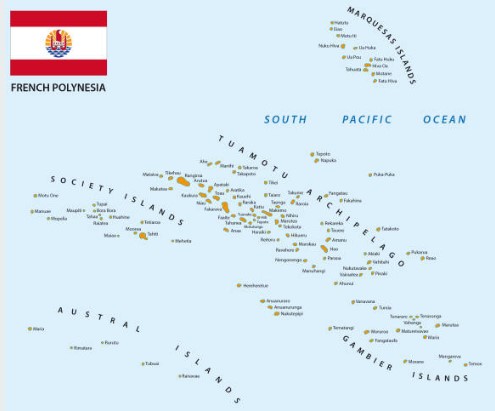
They sit in the South Pacific Ocean about half way between Australia and South America. Combined they stretch over 2,000 kilometres and have a total land area of 3,500 square kilometres, with a population of a bit over a quarter of a million.
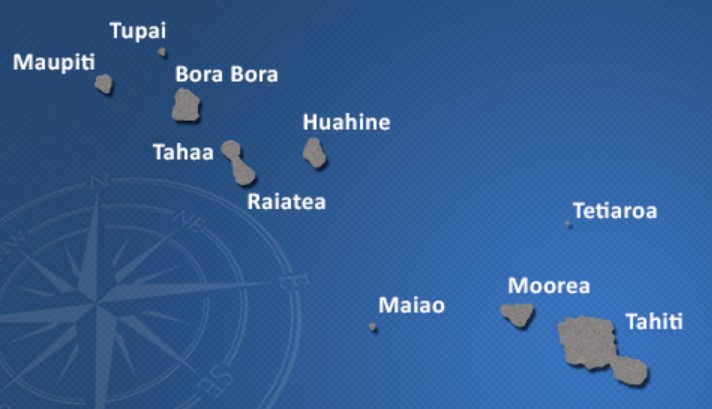
The Society Islands include the major islands of Tahiti, Moʻorea, Raiatea, Bora Bora and Huahine. The archipelago is believed to have been named by Captain James Cook during his first voyage in 1769.
The Tuamotu Archipelago are a chain of just under 80 islands and atolls that constitute the largest chain of atolls in the world, extending (northwest to southeast) over an area roughly the size of Western Europe. Their combined land area is 850 square kilometres. The major islands are Anaa, Fakarava, Hao and Makemo.
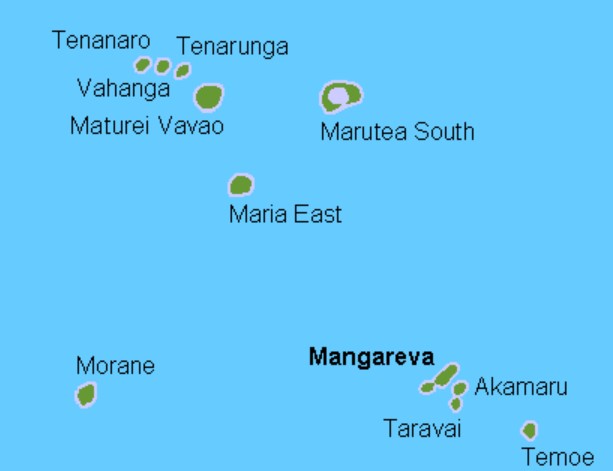
The Gambier Islands are a group of islands that are remnants of a caldera with islets and a fringing reef. They are generally considered separate from Tuamotu due to different culture and language.
The Marquesas Islands are one of the most remote in the world with Mexico (about 4,800 kilometres away) the closest continental landmass.
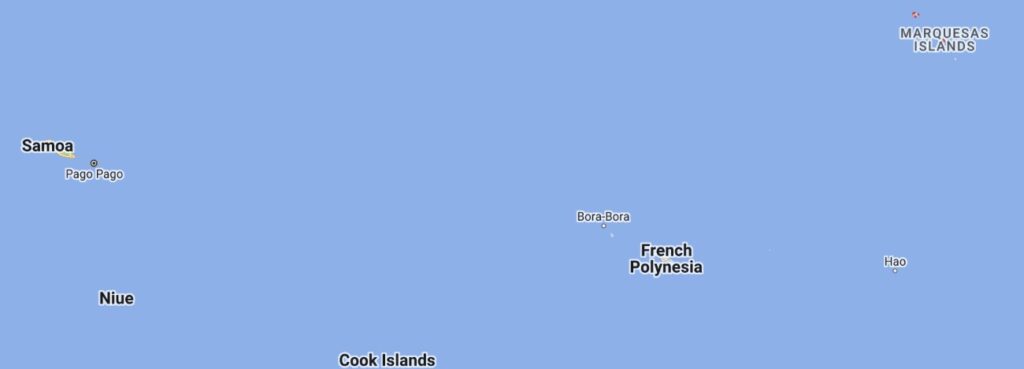
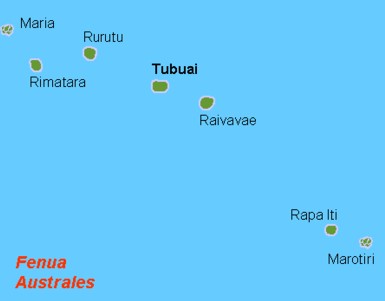
The Austral Islands are the southernmost group of islands in French Polynesia with a population of around 7000 across almost 150 square kilometers.
Our foray into French Polynesia was to take us into the Society Islands particularly Raiatea, Tahiti and Moʻorea but missing out on Bora Bora and Huahine.
Raiatea Island
Raiatea is the second largest of the Society Islands, after Tahiti. It is widely considered to be the birthplace of Polynesian culture. Regarded as the ‘sacred’ island and birthplace of the gods the island houses numerous archaeological treasures.
The first island in the region to be inhabited, it is also home to the most spectacular and important marae in the Polynesian Triangle.
A marae is a fenced-in complex of carved buildings and grounds that belongs to a particular iwi (tribe), hapū (sub-tribe) or whānau (family).
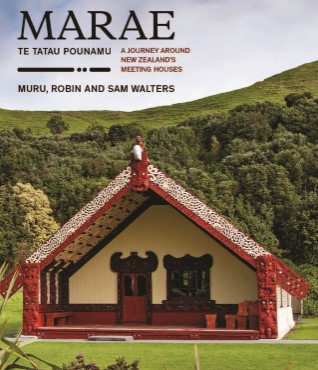
According to the blurb, the marae of Taputapuatea, was once the center of religious and political power in all of Polynesia, including Hawaii, New Zealand Easter Island and the Cook Islands.


The island has a regular population of under 13,000 people. Our landing saw us greeted by the typical bands, flowers and dancing displays before being let loose on a pretty small, but incredibly clean and friendly township.






There was not a lot to do in town and we had not booked a wider island tour so we wandered the streets, checked out the (exorbitantly priced) shops and generally just poked about the very pretty township.






We found our way down to a local swimming spot, not far from town, and had a fantastic dip in the ocean pool. As some of the first off the ship, we were among the first to the swimming hole and had a great half an hour before the hordes began to descend on our little hidey hole.





Sadly we (well Jill really) had a clash with (possibly) the worst type of human being that exists, the bogan Aussie mother. She and her tribe of boganettes came in and took over the entire area, moving other people’s stuff around so that her mob could have the shady area under the tree, despite others beating them to the location. And from here when Jill called her out for her rudeness she then wanted to pick a fight.
A charming display of Australians on vacation.
Papeete, Tahiti
Papeete is the small (under 30,000) capital of French Polynesia. The name Papeʻetē means “water from a basket”. It has a tropical climate with a distinct wet and dry season.
Our entry to Papeete, Tahiti was less than stellar as we arrived on a wet and rainy Sunday. As is usual on a Sunday throughout the highly religious Polynesian region, everything is shut and very little is going on. This meant that in no way did we see the best of Tahiti and more particularly Papeete.






But what we did find, was yet another incredibly clean township, beautifully maintained and filled with a friendly and welcoming population. As almost everything was shut, there was very little to amuse ourselves with other than to wander through the immaculate parks and gardens that were on offer in the township and more specifically along the shoreline.










An amazing thing that we discovered was an area between the shoreline and the Marina (only a few meters wide). Here the Tahitians had been submerging artificial reefs in the already developed areas to try and encourage the sea life and coral back into the areas that they once likely inhabited.




While the town was closed, Tahiti did treat us to one of the best sunsets that we have had for quite some time.








Moorea Island
Moorea is one of the most scenically striking islands in French Polynesia. and was our last stop in French Polynesia. Located only ten nautical miles from Tahiti, it is easily accessible and a favorite destination for couples, families and locals.
We had a snorkelling tour organised which saw us off the ship and on a smaller boat for a snorkelling adventure. The first thing was to head back to the boat to watch the show put on by the local Spinner dolphins. So we saw several small groups of dolphins leaping from the water and doing various types of acrobatics along the way. This was also the way our Maldives day went so the early signs were that this might be a good day out on the water.
Next stop was to a small area that had a ton of sting rays and black tip reef sharks. And there were plenty there to see and they were not shy with the humans.
As usual, I was one of the first out of the boat and while trying to climb down the stairs an overly inquisitive stingray of about a meter diameter decided that I was his friend and tried to mount my leg while I tried to enter the water. My knowledge of stingrays is limited, but I do know that one of them killed Steve Irwin.
And here I am on a set of stairs, wondering if it is going to move so I can jump in the water without landing on it and pissing it off. Long story short, it didn’t move, I shoved it aside and jumped in the vicinity of clear water (and did not get barbed). From here on we were set upon by stingrays (likely looking for food) and had the Black Tip Reef sharks swimming much closer than I had imagined that they would.






The next stop was to a pretty flogged out coral garden that was more trampled than garden. But the water was clean and there were a few small parrot fish bobbing about. But sadly not a shadow on the Australian offerings. A bit later on we got to see (but sadly not swim with) some turtles as the boat bobbed along close to shore.








French Polynesia was nice. It was very pretty, well maintained and beautifully clean. Added to this it was obscenely expensive with some fairly limited cuisine options (at top dollar). The waters are clean and the people have a great attitude towards littering with none to be seen. And importantly, they really seem to care about the oceans and the state and health of the waters.
It was nice to see (on a cruise ship transiting) and we would happily come back, but it is unlikely to ever feature as somewhere that we would aim to come to again. It is a long way from anywhere, with not much on offer and while it was great to see, we would not pick this as a destination island, preferring many others long before this.